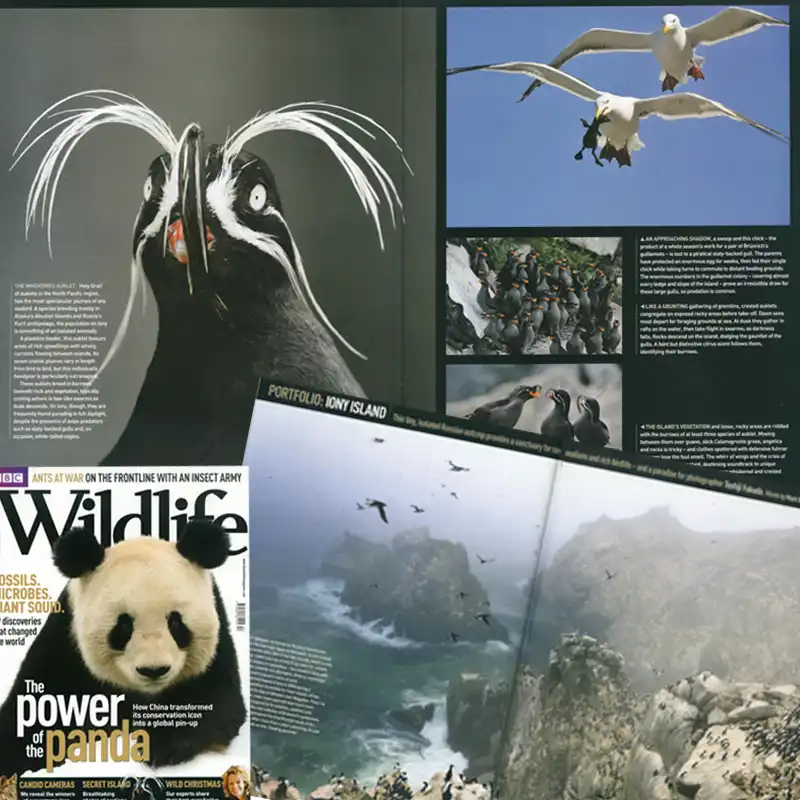 Now loading...
Now loading...
 Now loading...
Now loading...
Steller sea lion and seabird paradise
The 150-meter-high pyramid-shaped island remained unexplored for 35 years. In the summer of 2009, I went to the island with five Russian ornithologists and photographed over a million seabirds and sea lions.
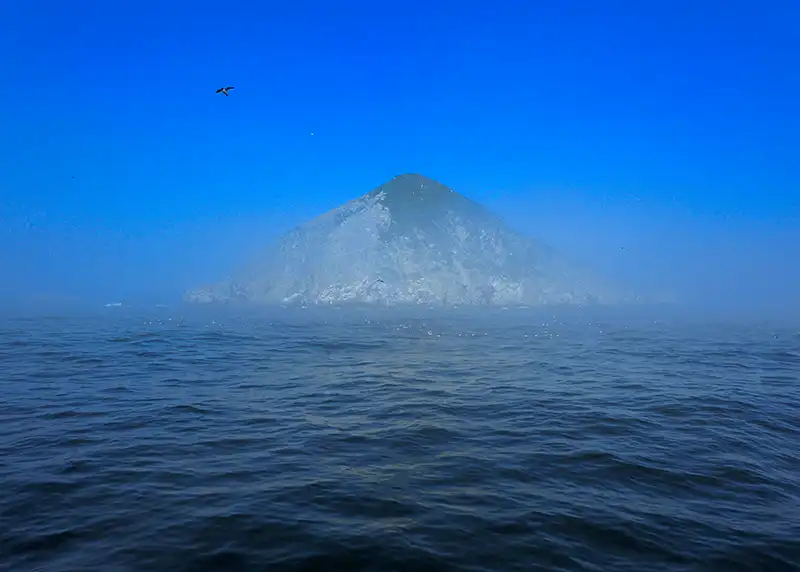
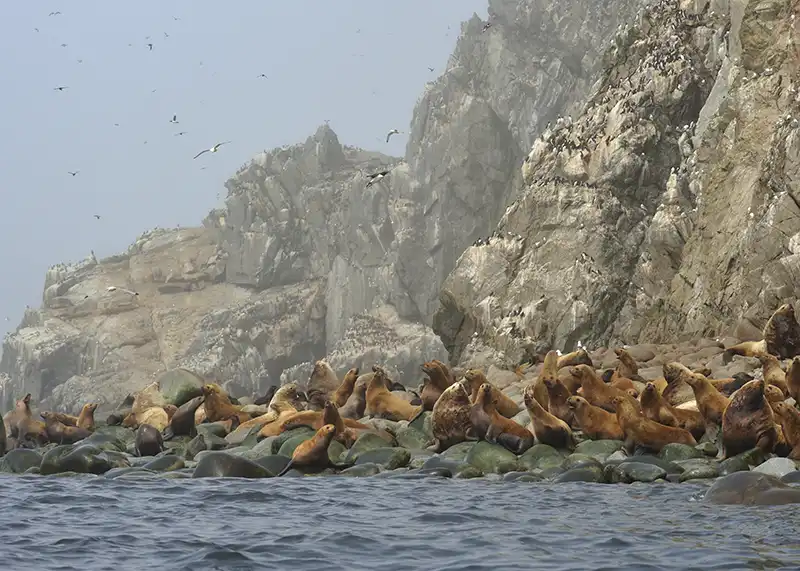
Here, huge bulls - nearing 3m long and weighing up to 1,000kg - battle until bloody, each attracting a harem of co-operative females. These are much smaller, less than 300kg, and each produces a single pup annually between May and July, mating again soon afterwards with a dominant male. Declining dramatically in parts of their North American range, Steller's sealions are doing well in the Sea of Okhotsk; an estimated 5,000-7,000 call lony Island home, with some 1,000 pups born each year. So crowded is lony's shoreline that an initial landing seemed almost impossible. These sealions have a reputation for aggression, but Fukuda found them to be cautious but relaxed, allowing close encounters both on land and from the small rubber boats used by his team.
every spare centimetre of lony's rocky shoreline is home to bellowing, roaring, battling, mating, pup-raising and napping Steller's sealions. They loll around every corner and on every rock; the sound is deafening and the acrid smell can bring tears to your eyes.
Later in the season, bleating pups play and beg, eventually braving the seas as they learn about their watery world. Away from the haul-outs, rookeries and harems of the beachmasters, subadult male sealions seek quieter corners and avoid confrontation with more powerful bulls. Females not yet claimed as harem members, though, are fair game for hot-: blooded young males.
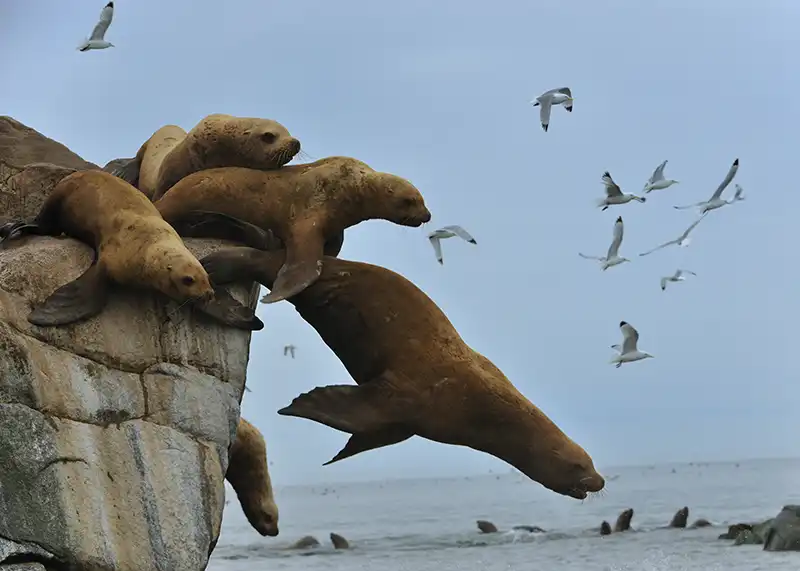
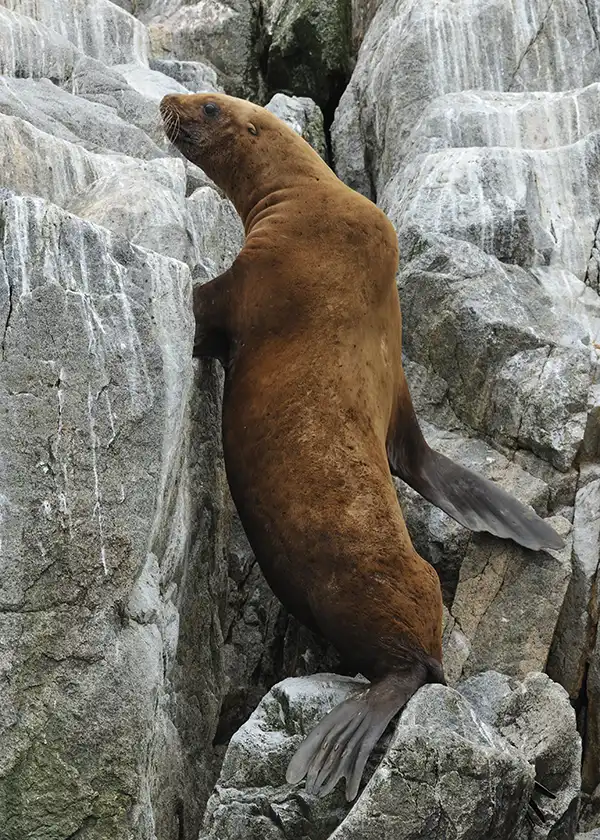
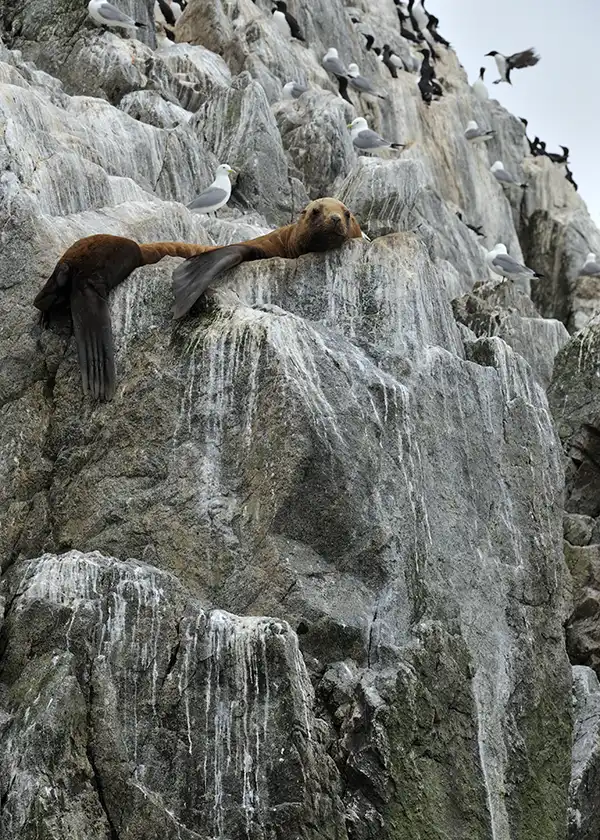
THE SEA OF Okhotsk, bordered by Russia's Kamchatka Peninsula to the east and Japan to the south, is rich in food for seals and birds alike. But it has few islands, which is why the tiny, steep-sided outcrop of lony is an oasis for wildlife.
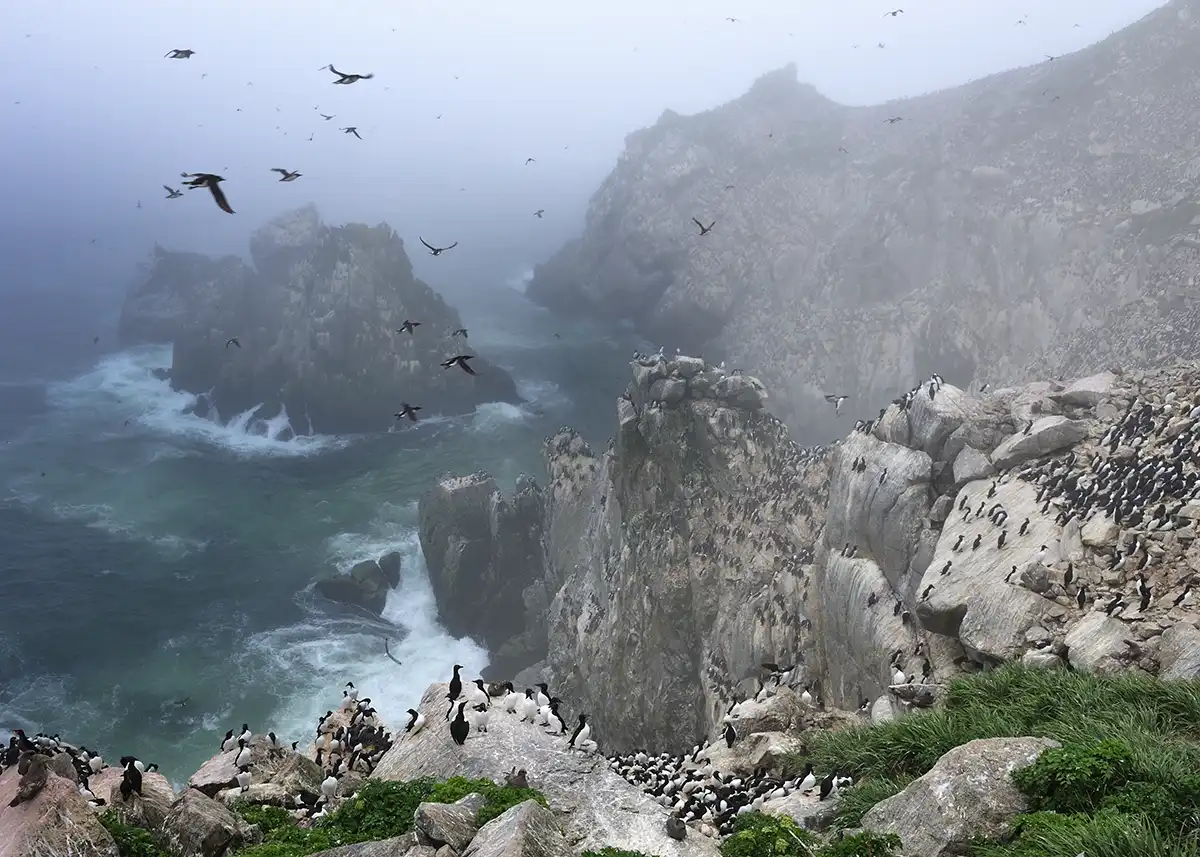
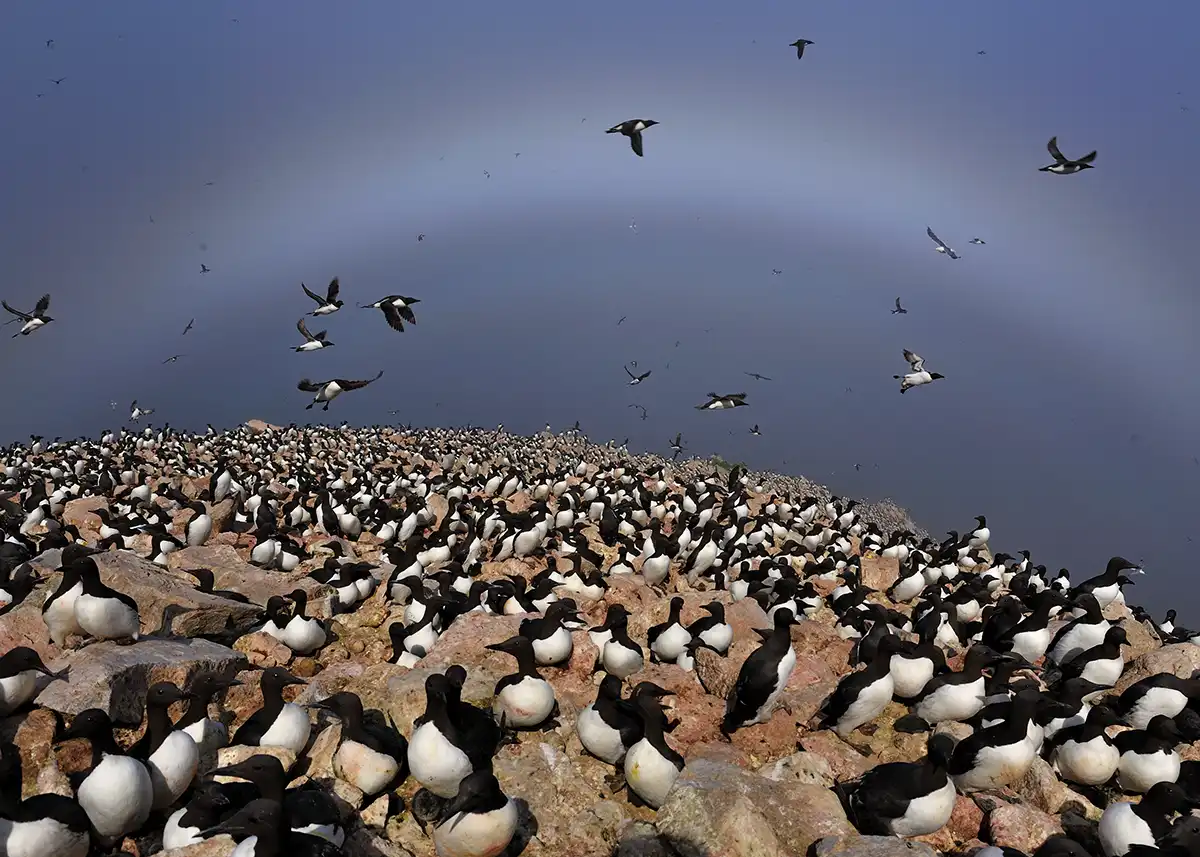
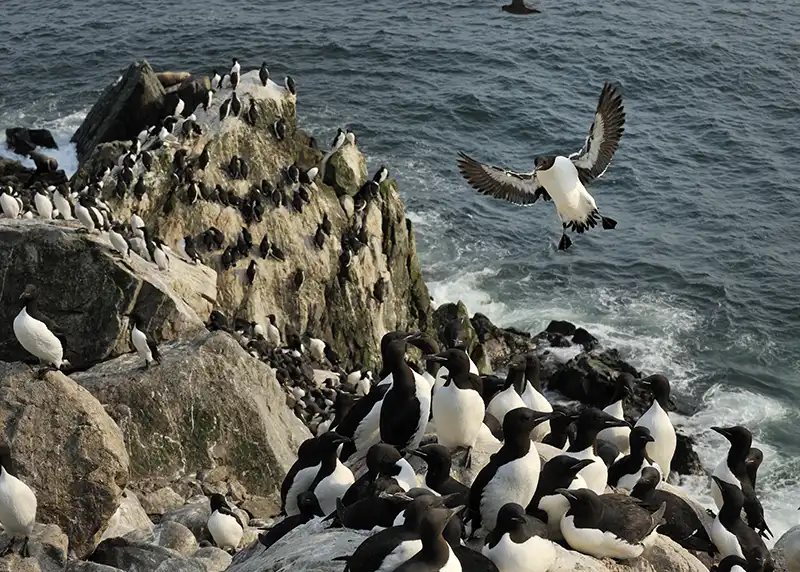
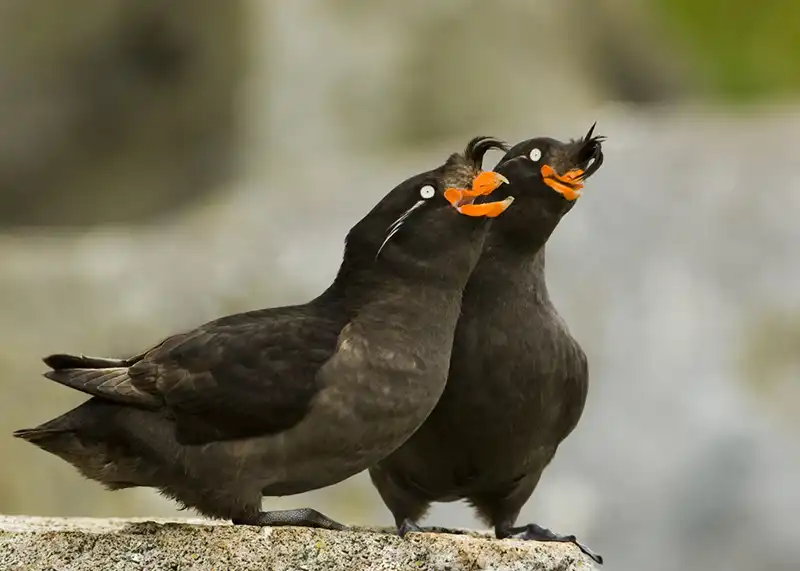
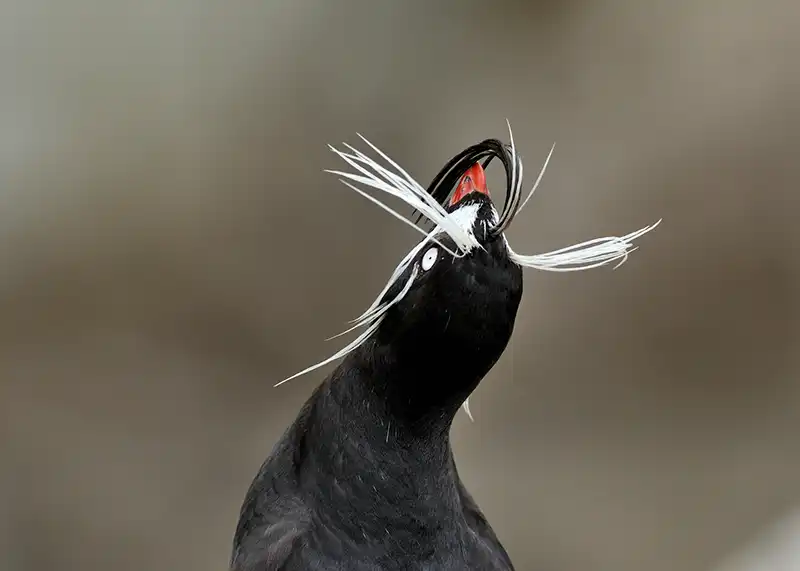
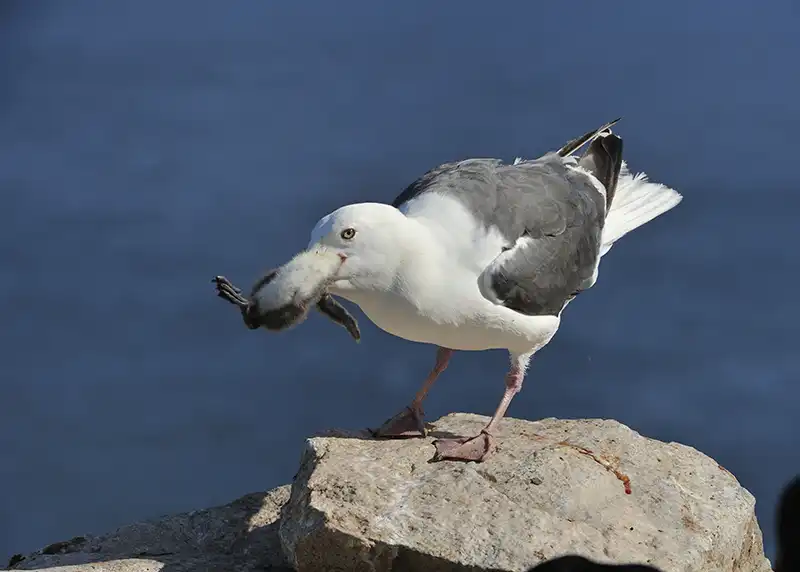
Walking on its slopes is hazardous - the island is slick with guano - but the rewards are abundant: birds or mammals occupy almost every square metre of land.
Toshiji Fukuda first heard of lony in 2008 during a photographic expedition to wonderful Talan Island, off the northern shore of the Sea of Okhotsk near Magadan. There he learned of another, even more splendid and much more remote islet: lony. Inspired by its isolation, sealions and seabirds - notably the vast colonies of Brünnich's guillemots pictured here - he sponsored the first Russian study of its wildlife for 35 years. After more than a year's planning, he and his team spent a month on this 'floating pyramid'.
